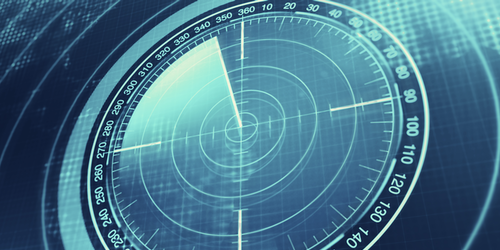Locating Objects with Quantum Radar
To find an object’s location, a radar system detects both the object’s distance and the direction in which it lies. To do that, the system transmits radio waves and then measures returning waves that have bounced back off the object. Now, Lorenzo Maccone of the University of Pavia in Italy and Changliang Ren of the Chongqing Institute of Green and Intelligent Technology in China propose a method that uses entangled photons as radar probes. They say that their method could allow for more precise position measurements.
Theoretical predictions indicate that transmitting entangled photons rather than independent ones—as in the classical radar technique—should improve the precision of radar measurements. However, while the quantum radar methods so far proposed could determine the distance to an object more precisely than classical radar, they offered no improvements in determining its direction. The method of Maccone and Ren does both.
To develop their scheme, the duo expanded to 3D a previously proposed 1D method. They accounted for all the spatial degrees of freedom of the entangled photons, and they analyzed how the radar signal would propagate from the target object to the receiver. They found that for N entangled-photon radar probes, the 3D region of possible positions of an object narrowed by N3∕2compared to a classical radar scheme using the same number of independent photons.
The technique does have limitations, including a high sensitivity to noise: Losing even one entangled photon would cost the system some of its advantage over the classical version. There are ways to mitigate this problem, and the researchers suggest that their scheme could complement rather than replace classical radar systems.
This research is published in Physical Review Letters.
–Erika K. Carlson
Erika K. Carlson is a Corresponding Editor for Physics based in Brooklyn, New York.




